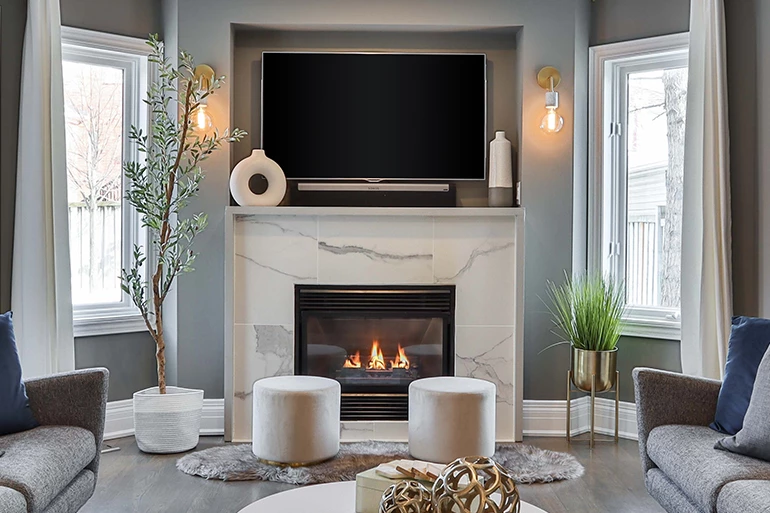Pro Tips to Make Your TV Over Fireplace Work
Mounting a TV over your fireplace is a great way to add a focal point to your home. But how do you do an over fireplace TV mount? Are there specific rules you have to follow for a TV above fireplaces? Can you mount a TV on a brick fireplace? What are the things to consider when mounting TV above a fireplace? What will you need? This overview will show you the best way to safely place a TV above your fireplace and how to make it look great.
Televisions near or above fireplaces consistently appear at major hearth and design trade shows, though many in the hearth industry dislike these installations due to the sensitivity of these appliances. Many people attempt to replicate these shows' designs in their homes. However, these installations are only sometimes accurately explained or demonstrated during these home shows. Some design implementations, including advertised model combinations, do not reflect the safety requirements for protecting homeowners and their property.


